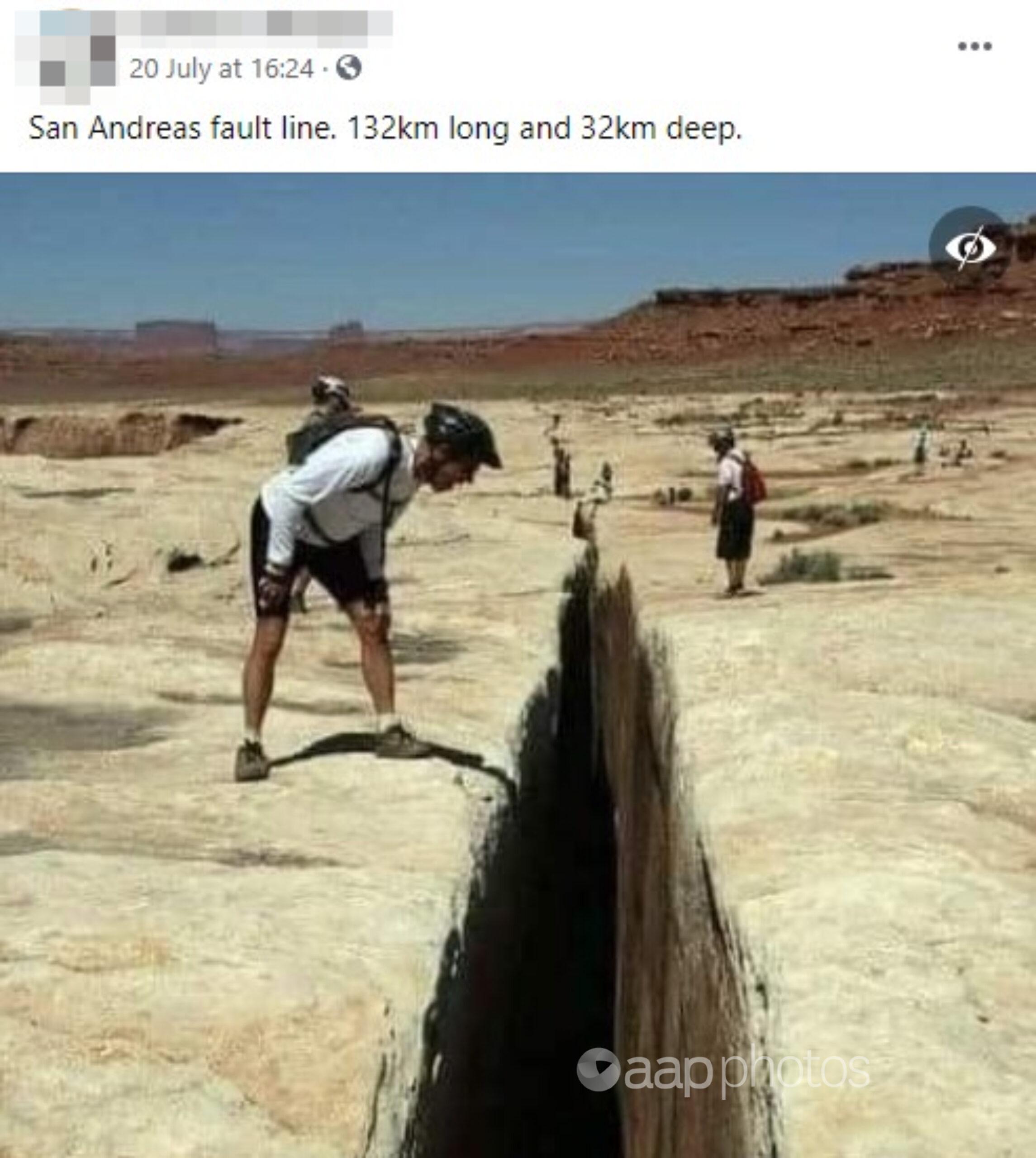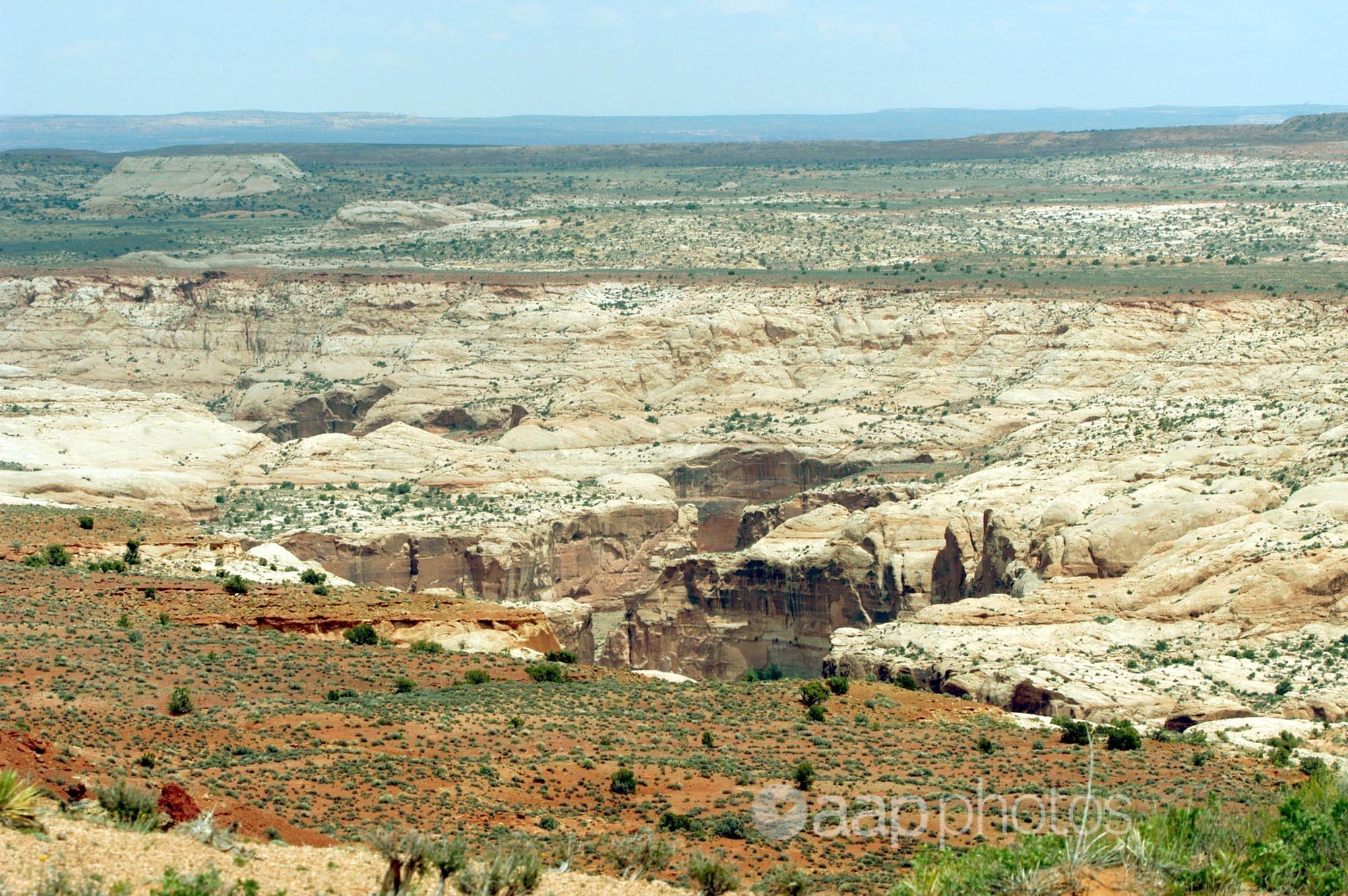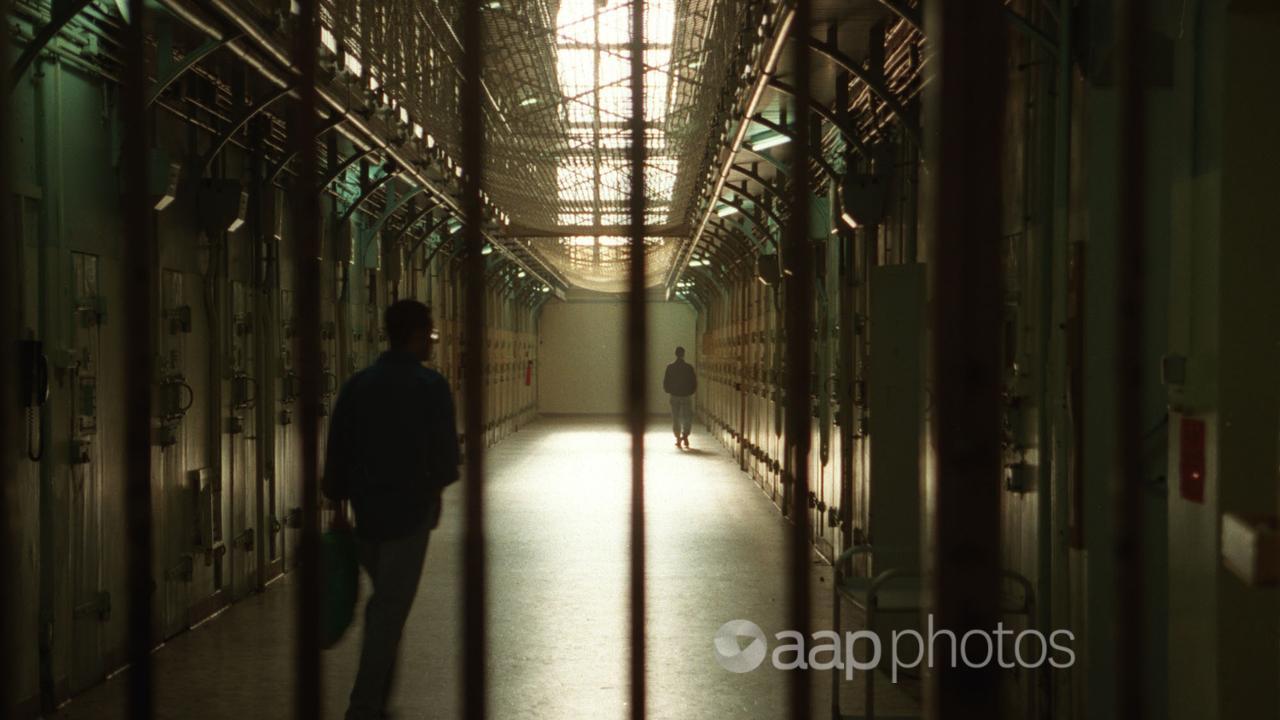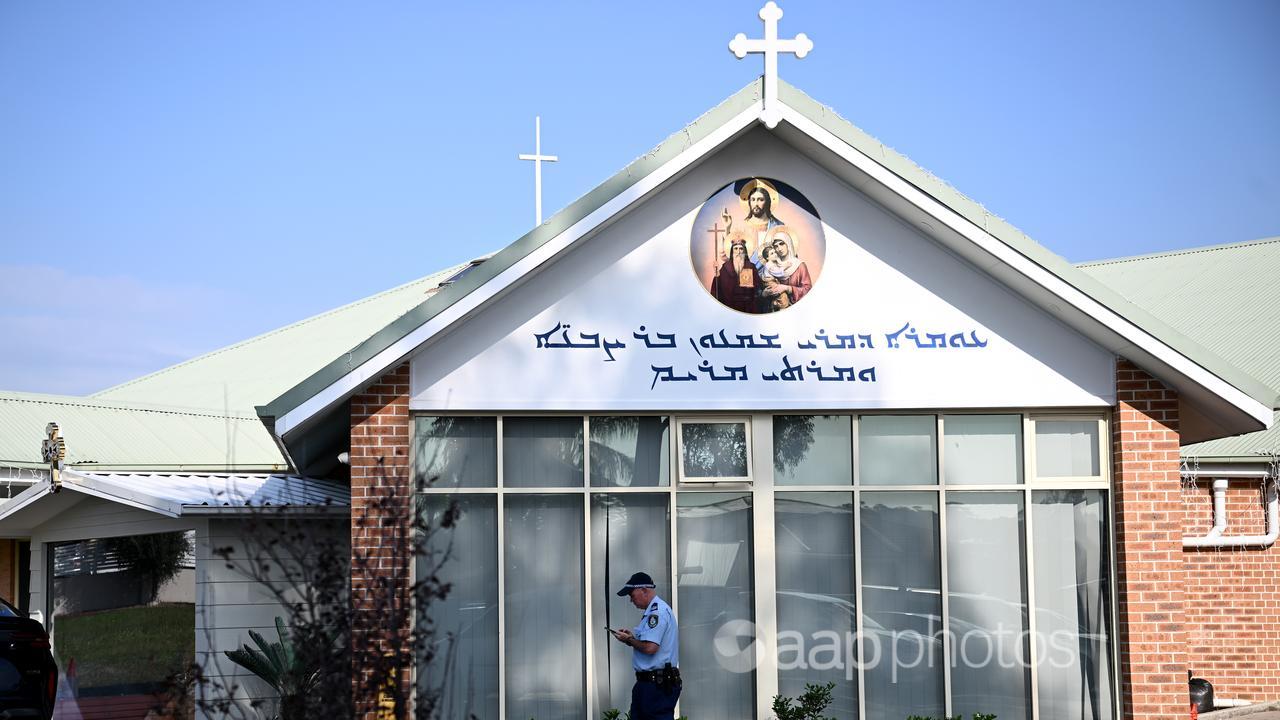The Statement
A Facebook post featuring a photo of a rock chasm claims the image shows the San Andreas Fault in California.
The July 20 post shows a man peering into the desert chasm with the caption: “San Andreas fault line. 132km long and 32km deep.”
The post was shared to a group mostly concerned with the “Tartarian Empire” conspiracy theory. A similar post from May 2020 has been shared more than 1100 times.

The Analysis
The photo in the Facebook post is not California’s San Andreas Fault; instead, it shows a geological feature in Utah, hundreds of kilometres away.
The San Andreas Fault is a 1300km line marking the boundary between the North American and Pacific tectonic plates. It is about 16km deep, according to the US Geological Service.
It runs almost the length of California, parallel to the Pacific coast, making it one of the longest fault lines in the world. Movement along the fault line has led to major earthquakes, including the 1906 San Francisco earthquake, which killed an estimated 3000 people and left half the city’s residents homeless.
While twisted rock along the fault line is visible in places, a website run by fault expert David K Lynch explains that the San Andreas Fault hasn’t ruptured on the surface since 1906 and “virtually all traces of the ‘giant crack in the ground’… have been erased”.
The photo in the post depicts the “Black Crack” in Canyonlands National Park in Utah, at least 700km away from the San Andreas Fault at its nearest point in southern California. Similar photos can be viewed on Alamy with several images in the photo library captioned as “Black Crack, White Rim trail, Canyonlands National Park, Moab, Utah” – see here, here and here.
A similar photo was also shared by the official Canyonlands National Park Service Facebook page, which describes Black Crack as “a fissure through sandstone at least 65 feet deep and three feet across”.
The original source of the post’s photo is unclear, however it has appeared online since at least 2016 and was previously correctly captioned as showing Black Crack in Utah – examples are here, here, here, here and here.
According to the US Geological Service’s interactive map of fault lines, the Canyonlands National Park includes a number of fault lines which form part of the Needles fault zone. It is unclear whether Black Crack is caused by a fault line, but it’s not part of the San Andreas Fault.

The Verdict
The photo in the Facebook post does not show the San Andreas Fault but rather Black Crack in Utah’s Canyonlands National Park. Similar photos confirm the picture’s true location.
False – Content that has no basis in fact.
* AAP FactCheck is an accredited member of the International Fact-Checking Network. To keep up with our latest fact checks, follow us on Facebook and Twitter.
All information, text and images included on the AAP Websites is for personal use only and may not be re-written, copied, re-sold or re-distributed, framed, linked, shared onto social media or otherwise used whether for compensation of any kind or not, unless you have the prior written permission of AAP. For more information, please refer to our standard terms and conditions.

















